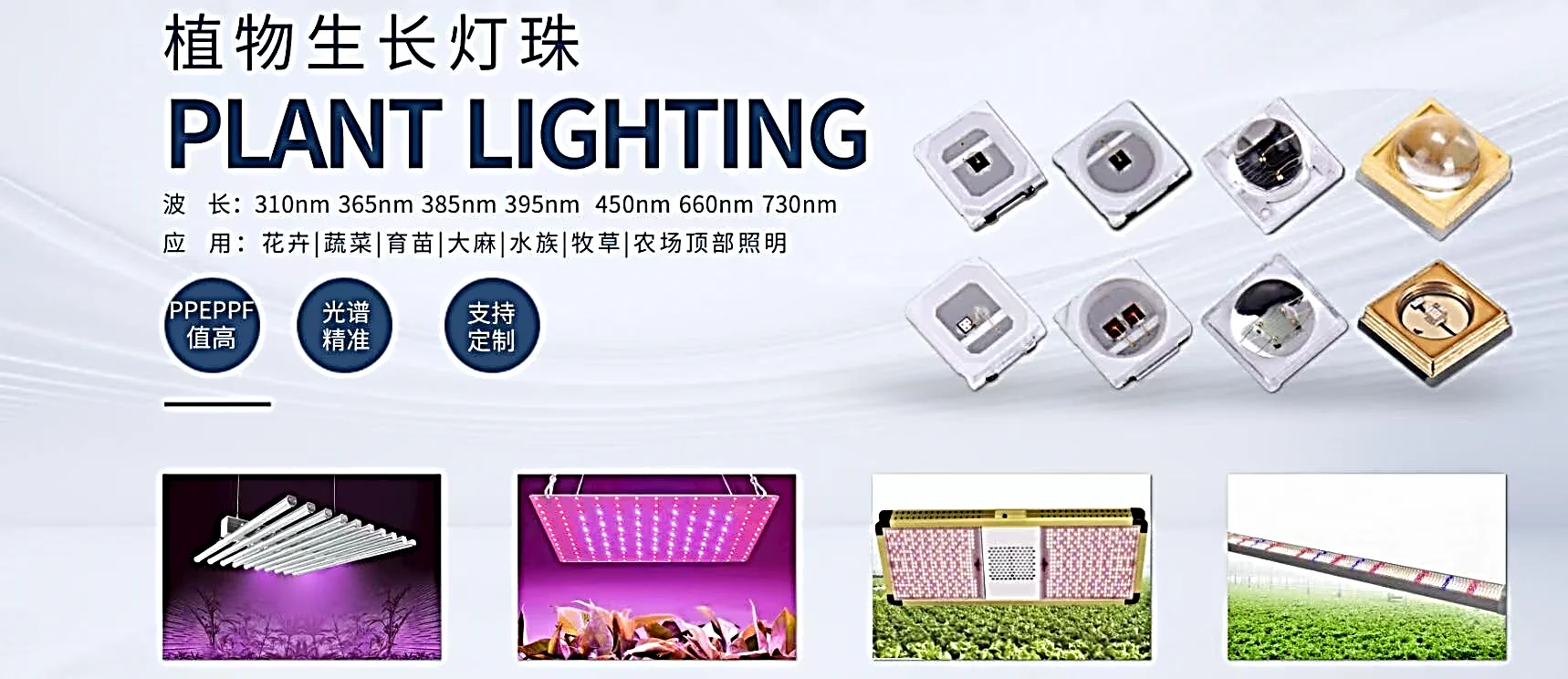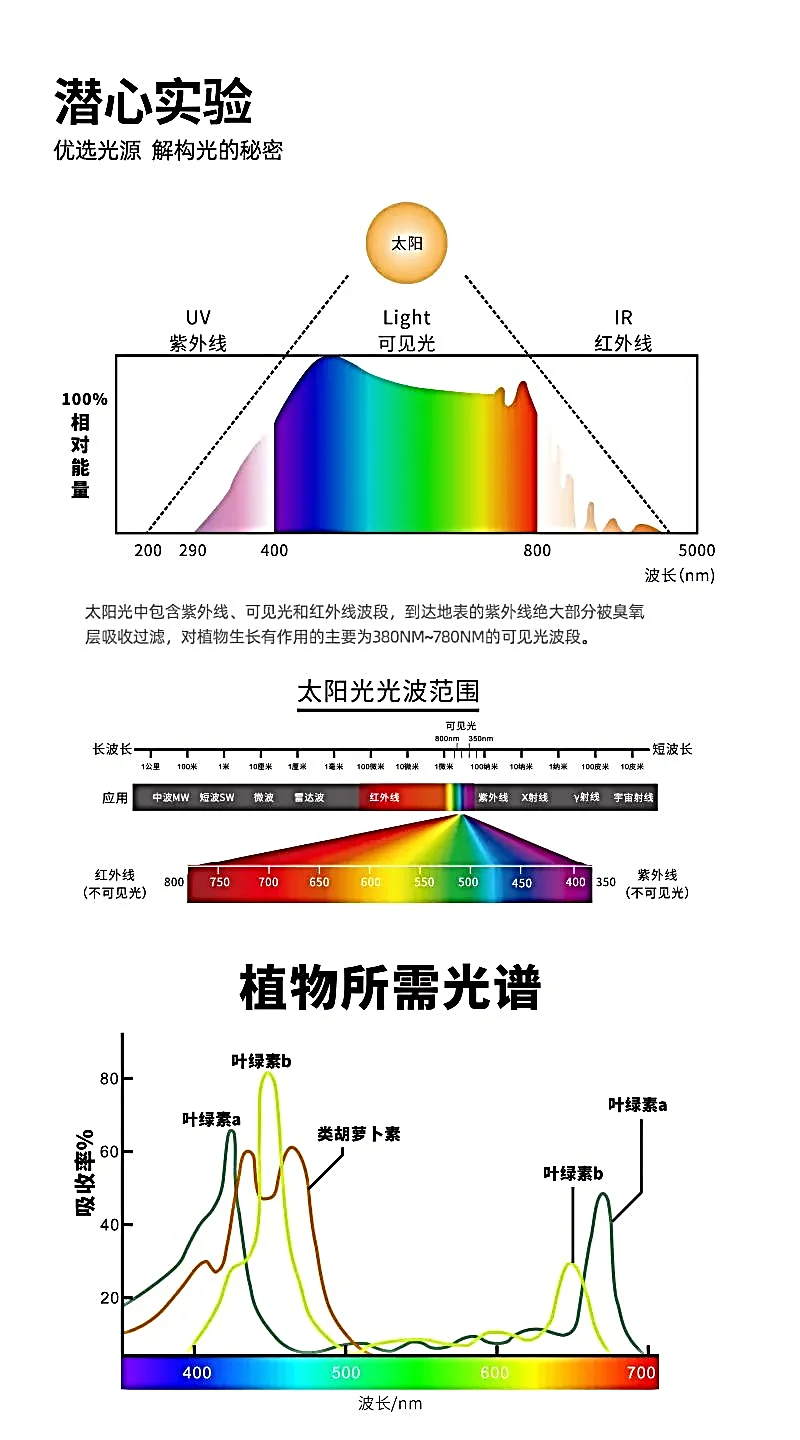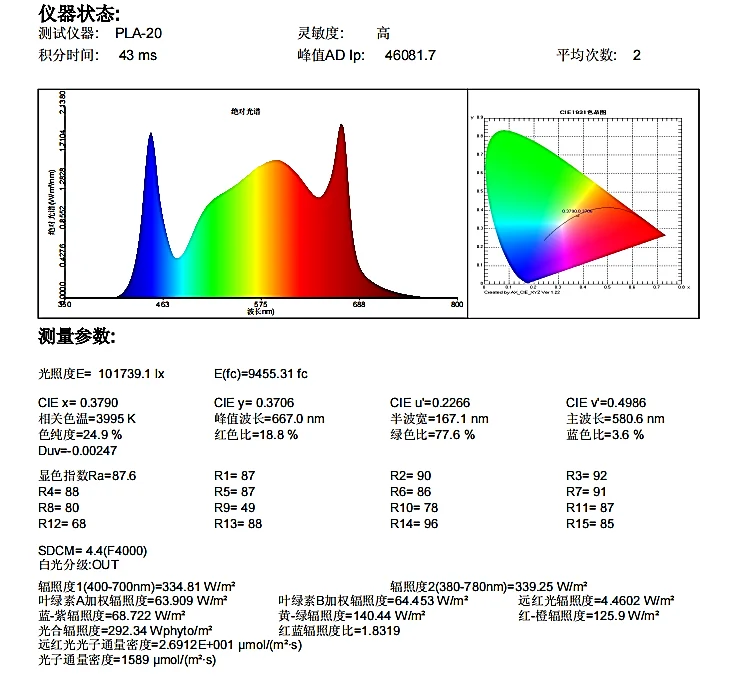- This topic is empty.
-
AuthorPosts
-
2025-07-24 at 2:41 pm #63013
As an important technological innovation in modern agriculture, LED plant growth supplementary lighting provides precise energy input for plant photosynthesis by simulating key bands in the solar spectrum, breaking through the temporal and spatial limitations of natural light. Its scientific principles can be summarized into the following five core dimensions:

i. The Spectral Code of Photosynthesis: The "Golden Pair" of Red and Blue Light
The core of photosynthesis in plants is the absorption of specific light waves by chlorophyll. Studies have shown that chlorophyll a and chlorophyll b in chloroplasts have the highest absorption rates for red light at 610-720nm (promoting the activation of photoreaction centers PSⅠ and PSⅡ) and blue light at 400-520nm (enhancing chlorophyll synthesis), contributing approximately 90% of the light energy conversion efficiency. For example:
Red light (660nm) : It dominates the operation of the photosynthetic electron transport chain and promotes flowering and fruiting. In tomato cultivation in Shouguang, Shandong Province, lamps with 80% red light can increase the photosynthetic rate by 50% and the yield by 14% to 30%.
Blue light (450nm) : Regulates stomatal opening and stem and leaf growth, preventing excessive growth. The Yunnan flower base has increased the thickness of rose stems by 20% through blue light regulation.
Green light (520-610nm), due to the high reflectivity of plants, makes a weak contribution to photosynthesis. However, a small amount of green light can penetrate the lower layer of leaves, enhancing the photosynthetic efficiency of the population.

ii. Spectral Plasticity of leds: From "Full Spectrum" to "Dynamic Adaptation"
Compared with traditional high-pressure sodium lamps and fluorescent lamps, the core advantage of leds lies in the customizable spectrum:
Red and blue combination lamp: It adopts a mixed light of red and blue chips, with the spectral peak concentrated at 450nm and 660nm, and the luminous efficacy reaching over 3.0μmol/J. It is suitable for rapid supplementary lighting of fruit crops (such as Shouguang peppers and strawberries).
Full-spectrum lamp: It simulates the entire spectrum of sunlight through fluorescent coating technology, including ultraviolet (280-400nm) and far-infrared (720-1000nm), and can regulate the accumulation of plant secondary metabolites (such as ginsenosides and anthocyanins).
Intelligent dimming system: Integrating Internet of Things technology, it dynamically adjusts the spectral ratio according to the growth stages of plants. For instance, the proportion of blue light during the seedling stage has increased to 30%, and the proportion of red light during the flowering stage has risen to 85%.
iii. Synergistic Regulation of Photoperiod and Light Quality: Breaking the "Relying on the Weather"
Plants sense photoperiodic changes through photosensitive pigments such as PhyA and PhyB, and LED fill lights can precisely control light signals.
Photopedic regulation: Extending red light exposure can break the dormancy of short-day plants (such as winter flower induction for chrysanthemums) and shorten the ripening period of strawberries by 7 to 10 days.
Light quality regulation: Far-red light (730nm) inhibits stem elongation through the "shading effect", and ultraviolet light (315-400nm) induces the expression of disease-resistant genes.
For instance, in Inner Mongolia, greenhouses provide supplementary lighting for 4 to 6 hours a day on cloudy and snowy days (with an intensity of 200μmol/m²·s), which leads to a 25% increase in cucumber yield against the trend.
iv. Optical Form Formation: From "Energy Supply" to "Form Programming"
Light not only provides energy but also regulates plant morphology through photoreceptors such as cryptochromes and phototropins.
Blue light-dominated: Activates CRY1 receptors, inhibits hypocotyl elongation, and makes leafy vegetable plants compact (for example, lettuce leaves thicken by 15%).
Red light dominance: Activates PhyB receptors, promoting branching and flowering (for example, the differentiation rate of tomato side buds increases by 30%).
In the plant factory, by using a 6:1 ratio of red and blue light, lettuce is densely planted on "three-dimensional racks", achieving a yield per unit area that is five times that of traditional cultivation.

v. Technical Advantages: Energy-saving, high efficiency and precise adaptation
Energy efficiency ratio: The photoelectric conversion efficiency of LED reaches 40%, which is 75% more energy-efficient than high-pressure sodium lamps, and its lifespan exceeds 30,000 hours.
Thermal management: It adopts an aluminum heat dissipation housing and an IP65 waterproof design, avoiding the risk of burning as in traditional lamps (such as only a 2-3℃ increase in blade temperature).
Economic efficiency: The cost of domestic LED lamps has dropped to 1.2 yuan per watt. The equipment investment for 50 mu of greenhouses is approximately 40,000 to 60,000 yuan, and the electricity return ratio is over 1:5.
Conclusion: From "Replacing Sunlight" to "Transcending Nature
LED plant supplementary lights not only make up for insufficient light but also achieve "customized growth" through spectral programming. With the breakthroughs in chip technology (such as quantum dot leds) and intelligent algorithms, the future will develop towards multi-dimensional linkage of "spectrum – environment – gene", promoting agriculture to enter the "light control era". For growers, mastering "light formula" techniques (such as red-blue ratio, light intensity, and irradiation timing) will be the key to increasing yield and improving quality.
https://www.y-crystaled.net/the-scientific-principle-of-led-plant-growth-supplementary-lighting.html
http://www.y-crystaled.net
Shenzhen Yuanjing Optoelectronics Technology Co., Ltd. -
AuthorPosts
- You must be logged in to reply to this topic.